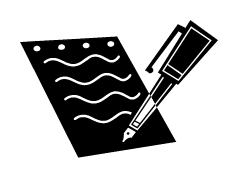How to Add Verb Power to Your Procedures

Writing good standard operating procedures has a lot to do with how you use verbs. If you’ve got verb power, then you are on your way to writing a good procedure. So what is verb power anyway? Learn how to add verb power to your procedures.
Power to the Verbs!
Verbs are the most powerful words in the English language, perhaps any language. A verb is the only word required in a sentence.
Stop. Think. Go. Look. Really? Wait.
OK, “really” is really an adverb (a verb modifier), but you get the point. You can use a verb to make a one word sentence.
Your procedures should be written in imperative sentences. What does that mean? It means your standard operating procedures are made of tasks that you want someone to follow.
An imperative is where we are expressing a command. Procedures are step-by-step descriptions that are not optional, they are imperative, as in commanding your workers to do something specific.
For example, The Payroll Manager issues paychecks every two weeks.
Either the Payroll Manager does or does not, it’s not an option. If it is an option then we need to qualify who also issues paychecks. Otherwise, it is management’s decision that the Payroll Manager is the one that issues the paychecks. Hence, the payroll procedure includes this imperative.
Good SOP Verbs
A good standard operating procedure (SOP) uses good verbs. The idea is to find a verb that answers the question: “What is the procedure task accomplishing?” Are you documenting, recording, analyzing, approving, opening, closing, managing or measuring?
What are good verbs to when writing Standard Operating Procedures – SOPs?
- Writes / reviews
- Documents / records
- Starts / completes
- Plans / maintains
- Analyzes / inspects
- Designs / programs
- Negotiates / approves
- Forecasts / balances
- Estimates / calculates
- Collects / distributes
- Opens / closes
- Manages / measures
Of course there are a lot more verbs you can use with procedures, but this is a start…
Start Your SOPs with Verbs
Effective procedures are made of a series of activities and each activity is comprised of a series of tasks. Each activity is a label that groups the steps together. The tasks are your steps you want someone to follow to accomplish the activity.
An example procedure:
Activity One – Planning, preparation or setup
Step One
Step Two
Activity Two – Perform, execute, or realize
Step One
Step Two
Activity Three – Complete, review, or cleanup
Step One
Step Two
Use Active Voice
Tasks should be organized in subject verb object order. We call this “Active Voice”. It’s active because we are using a direct style as opposed to a passive voice or indirect.
Notice that the verb is right up front with the subject. We want the reader to see themselves (the subject) right away so they know this task is about them.
The verb is prominently displayed and is in a commanding position. The verb directs what the subject is supposed to do. Verbs are your most effective procedure writing tools.
If the beginning of your procedure tasks don’t grab the reader and pull them into the procedure activity, then your procedure tasks will be unread and not followed. The beginning of your procedure tasks, powered by good SOP verbs, will make or break your procedures.
Passive Voice vs Active Voice
What happens when we use passive voice for our procedures? We end up hiding the task at the end of the sentence. This means we make the reader work harder to find what they are supposed to do.
You will also use more words to indirectly get to your point and this will lead to more confusion. If you want workers to read and follow your procedures, then you want to make it as easy as possible for them to use your procedures. Good procedures use active voice to get to the point!
For example,
Passive Voice
Every two weeks the paychecks of the company will be issued by the Manager of Payroll.
The passive construction “will be issued by” and the extra “of” lengthens the sentence to 16 words. More words is not better in this case.
Active Voice
The Payroll Manager issues company paychecks every two weeks.
The active construction eliminates the extra words and gets right to the point in only 9 words. It is more efficient, direct, and clear to the reader.
Add Verb Power to Your Procedures
If you are writing a lot of procedures then it is a good idea to collect good SOP verbs you can use to drive your reader to action. Don’t be passive, use an active voice and select verbs that command your reader. Now you know how to add verb power to your procedures and get right to the point with active voice.
See how to use verbs in action… download free policies and procedures now.

















Thank you this subject was really helpful